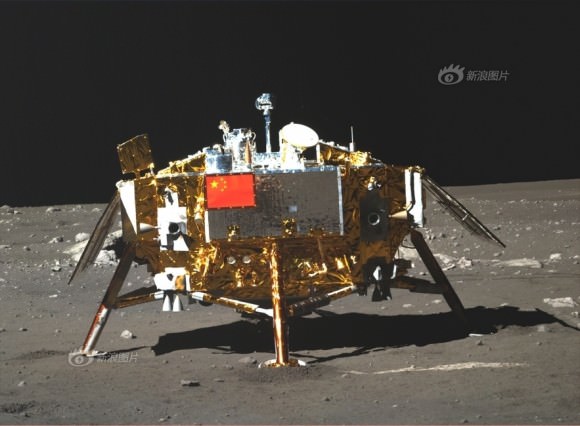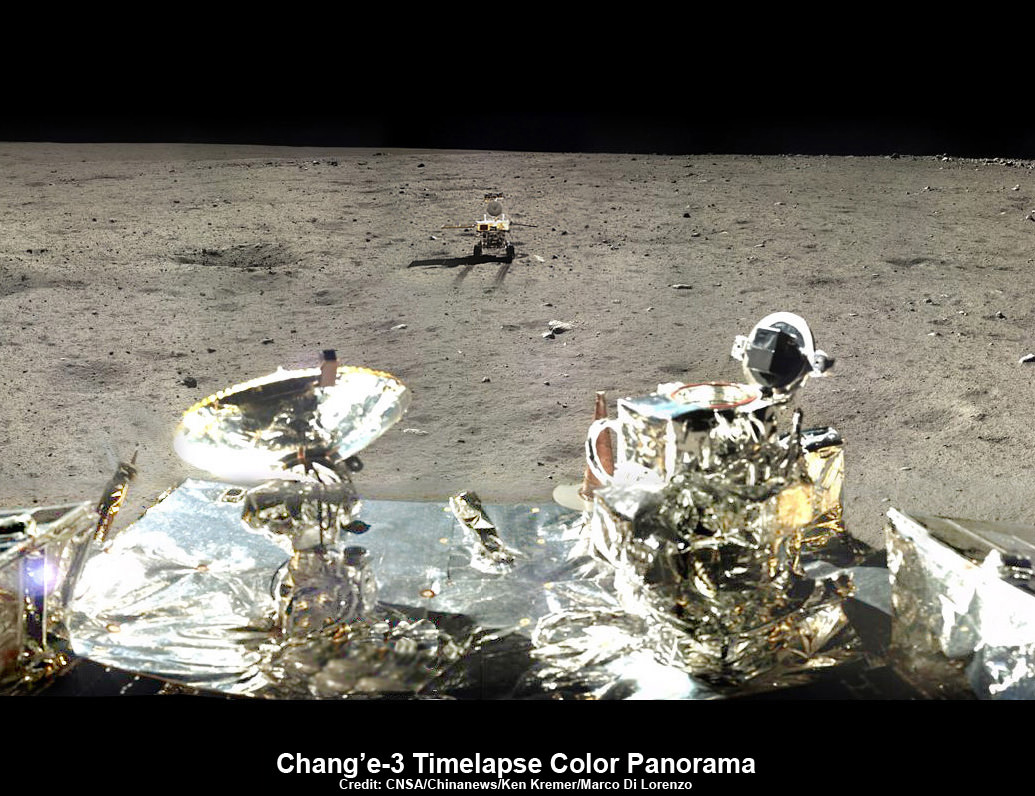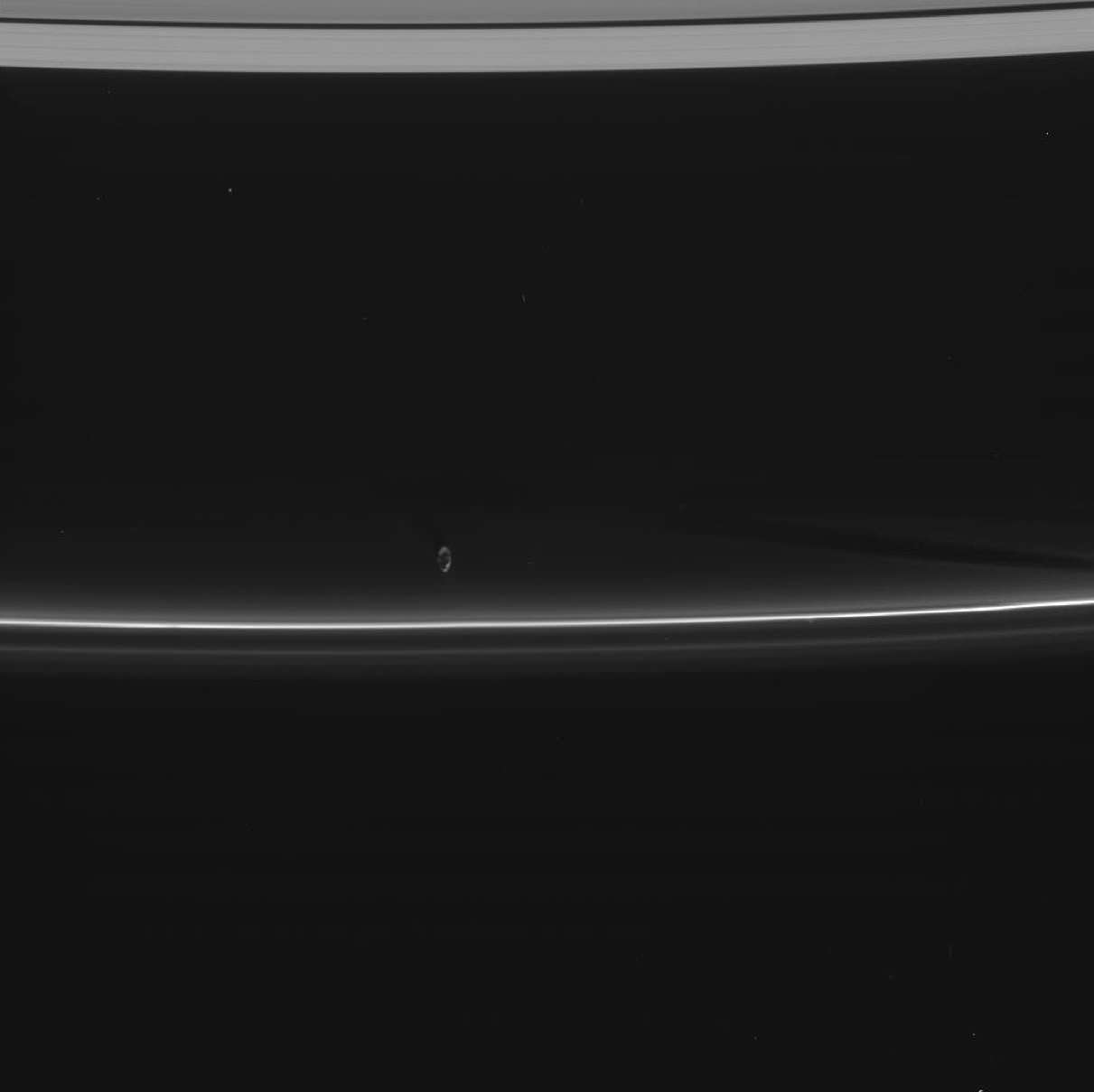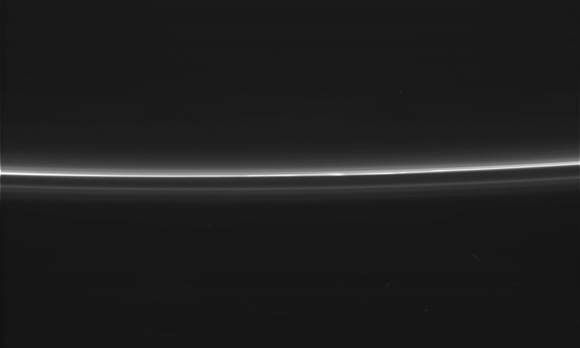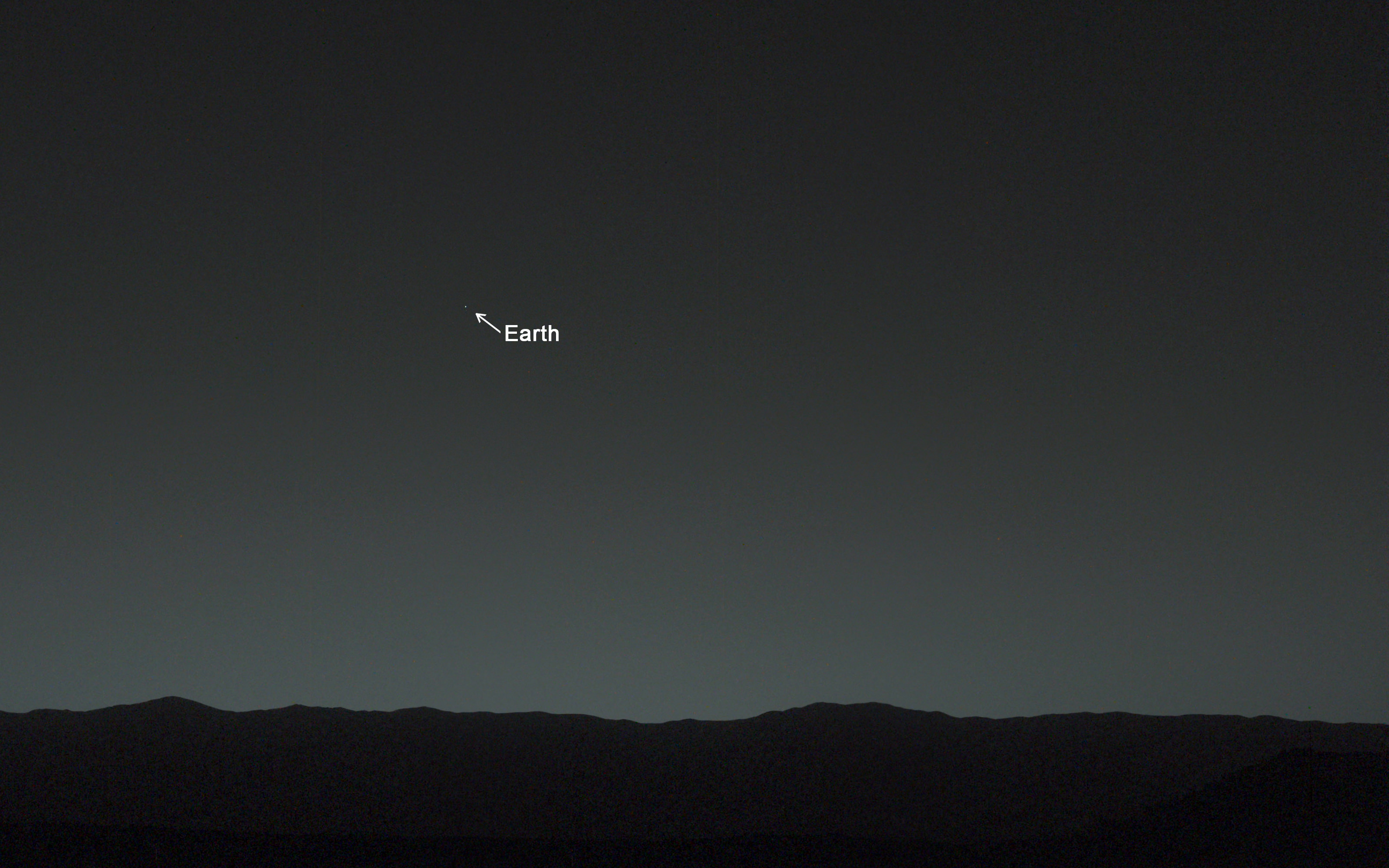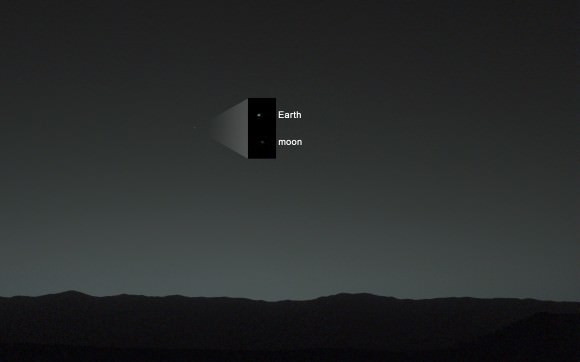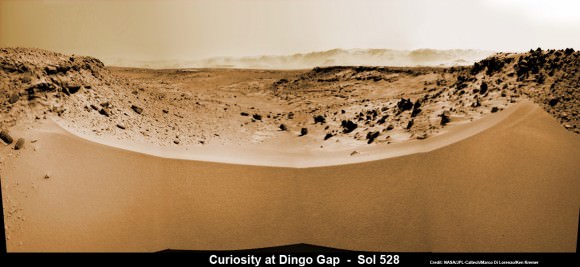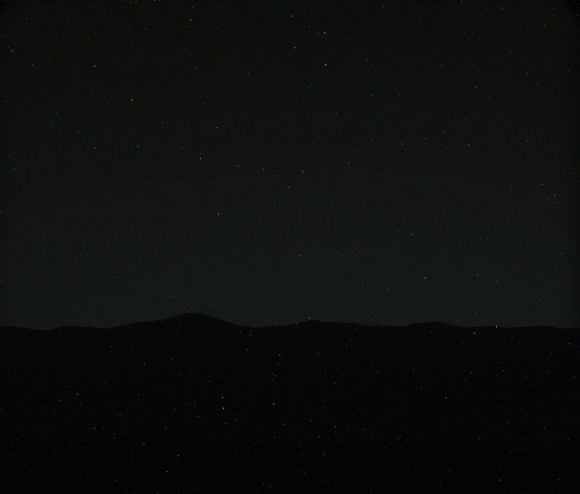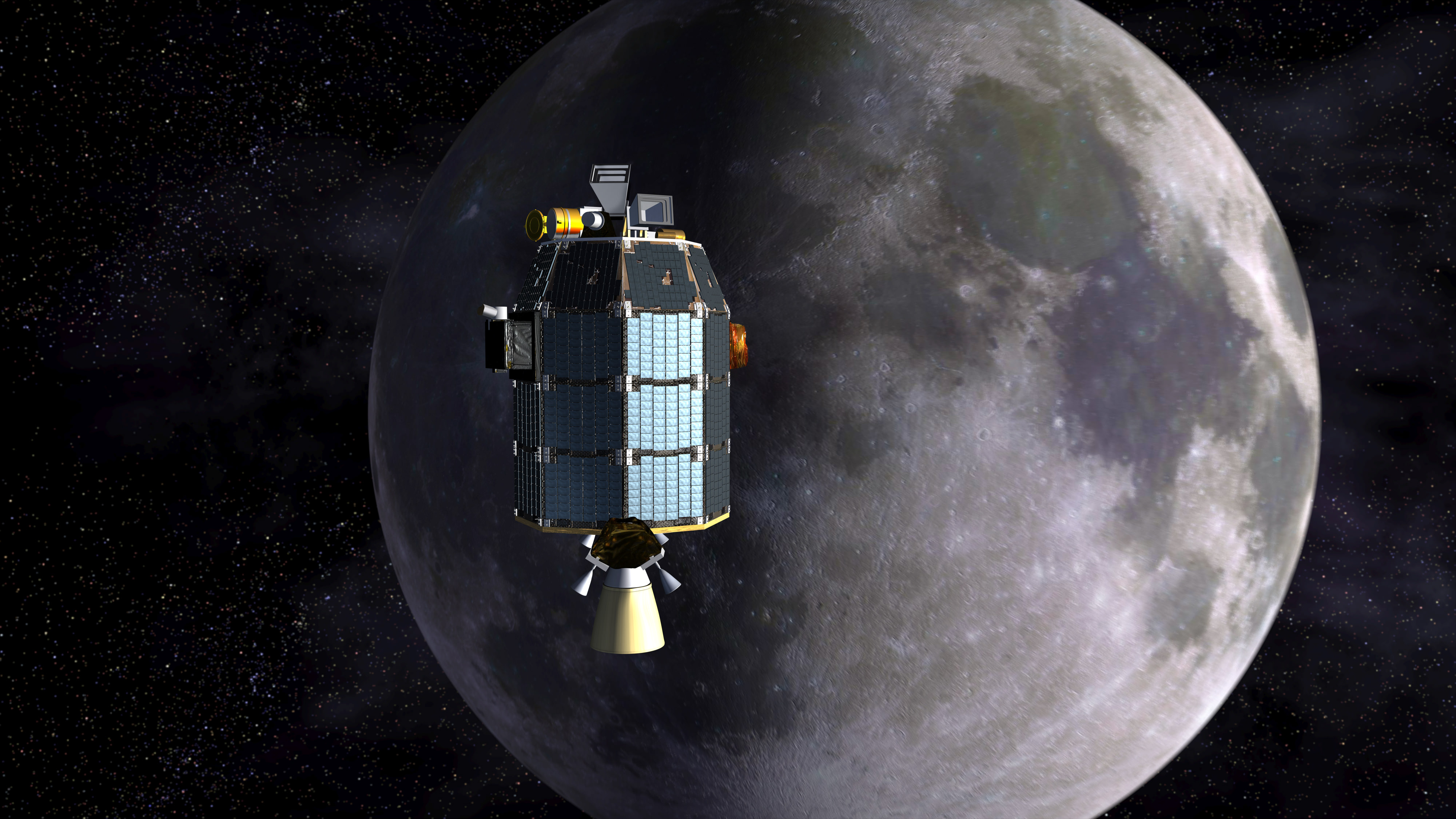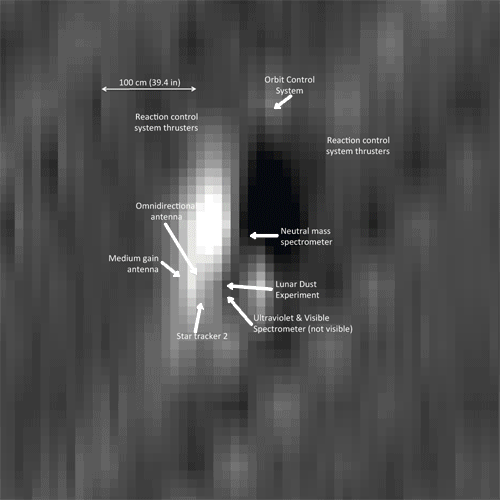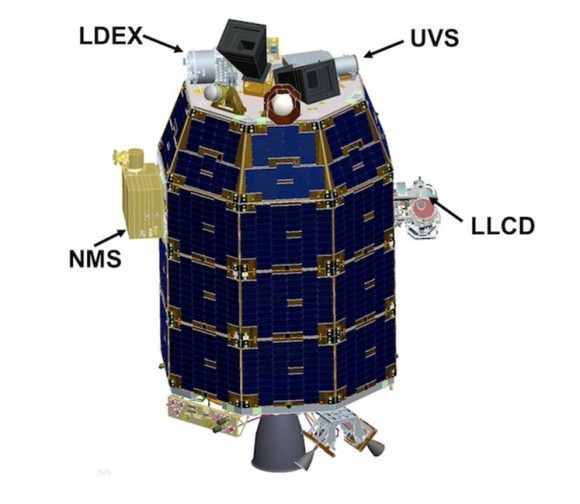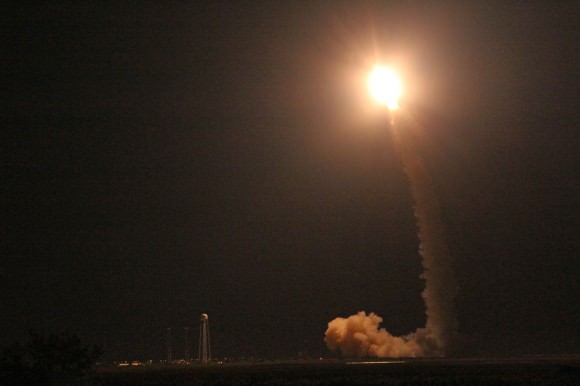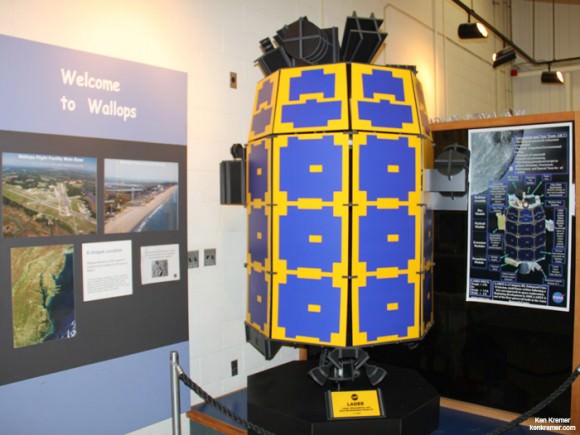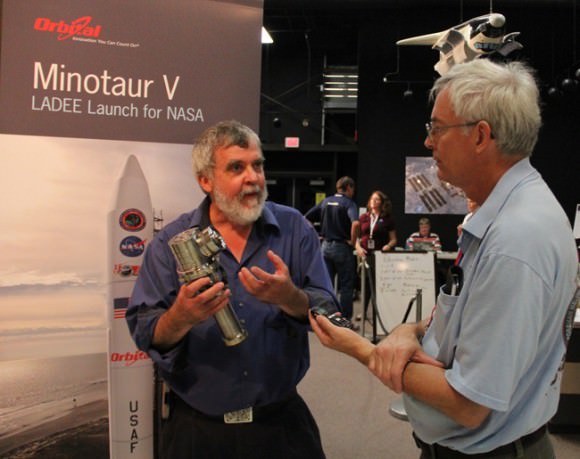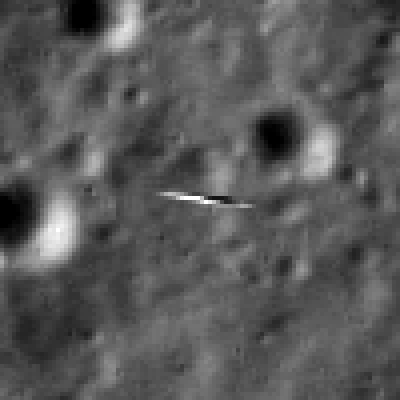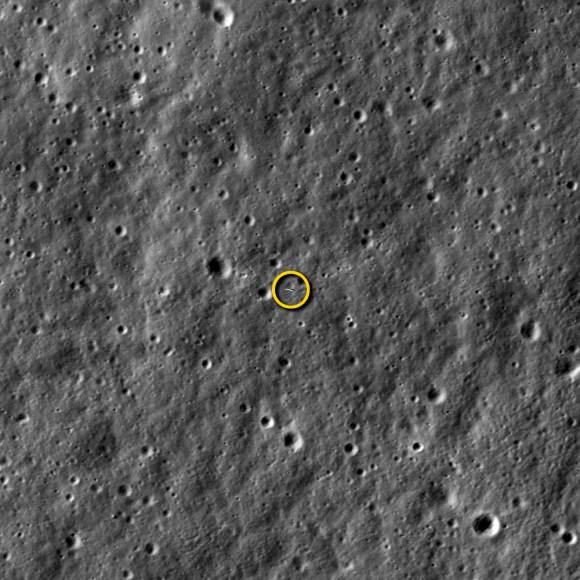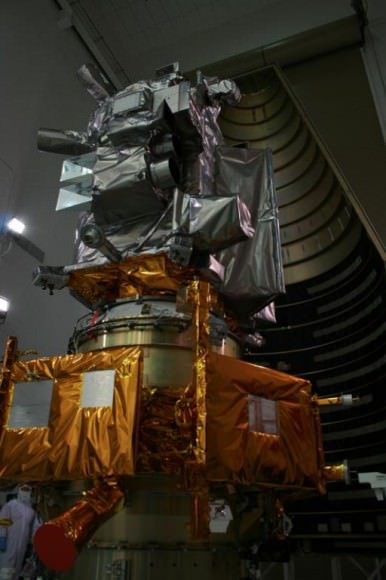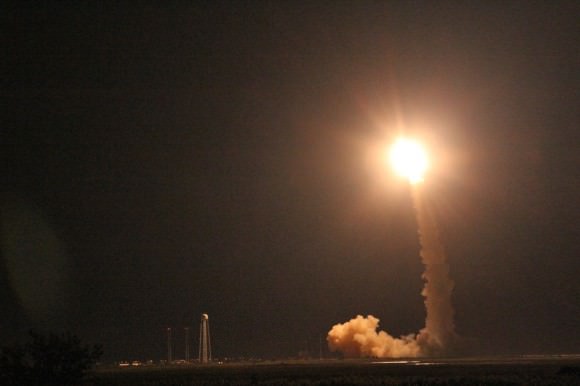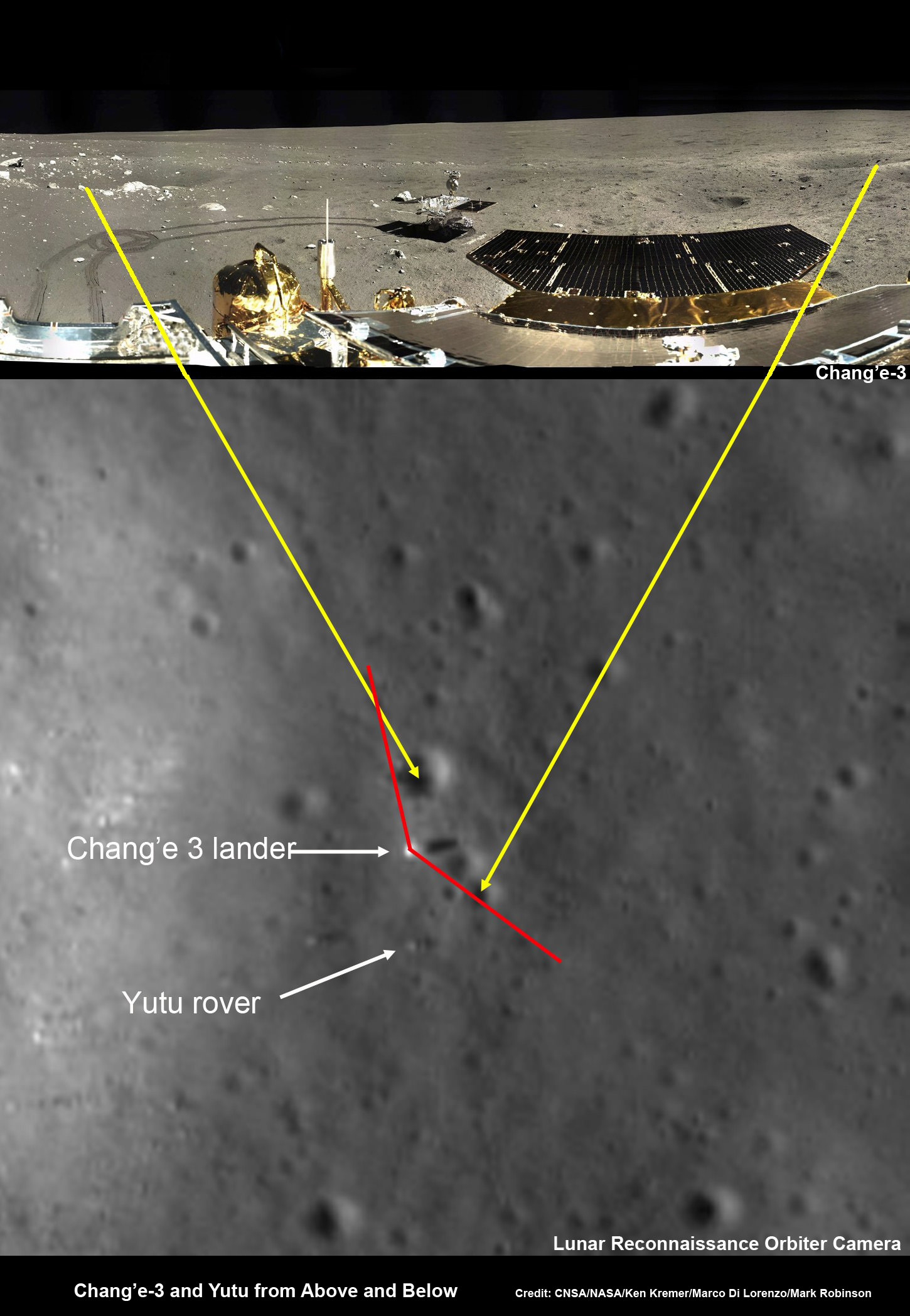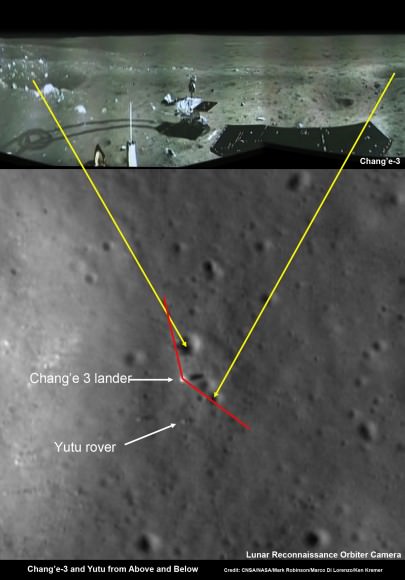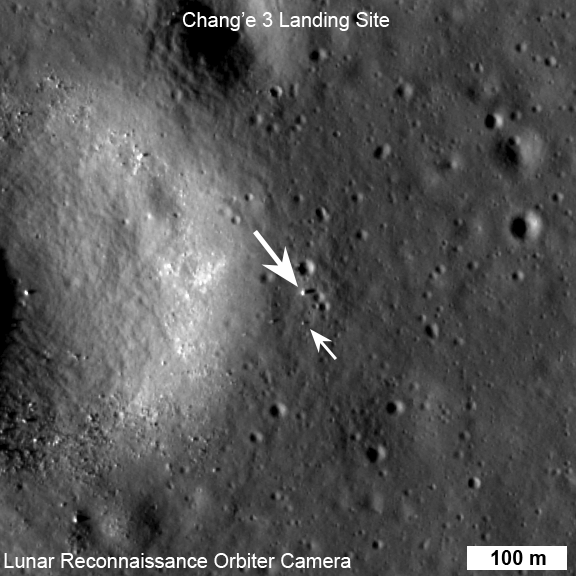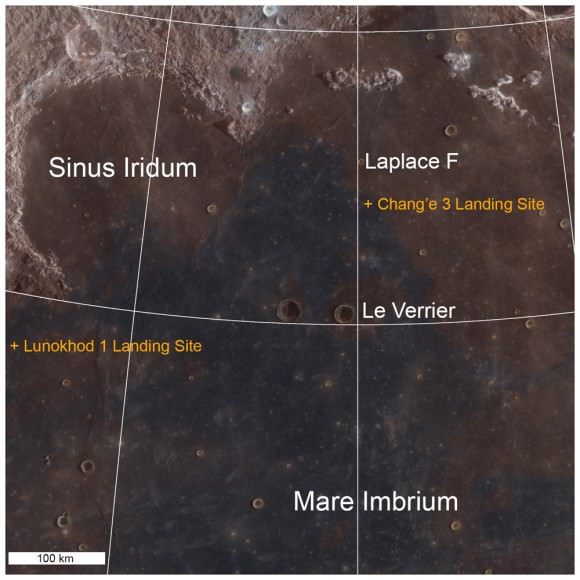Will Yutu Phone Home ?
This composite view shows China’s Yutu rover heading south and away forever from the Chang’e-3 landing site about a week after the Dec. 14, 2013 touchdown at Mare Imbrium. This cropped view was taken from the 360-degree timelapse panorama. See complete 360 degree landing site timelapse panorama below. Chang’e-3 landers extreme ultraviolet (EUV) camera is at right, antenna at left. Credit: CNSA/Chinanews/Ken Kremer/Marco Di Lorenzo – kenkremer.com
See our Yutu timelapse pano at NASA APOD Feb. 3, 2014:
http://apod.nasa.gov/apod/ap140203.html[/caption]
Will ‘Yutu’ phone home? Will Yutu live to see another Earthrise?
Those are the million dollar questions we’re all awaiting the answer to on pins and needles as Lunar Day 3 begins for China’s world famous ‘Yutu’ moon rover and Chang’e-3 lander, following a significant malfunction as night fell two weeks ago.
With the Sun due to rise over the Mare Imbrium landing site, China’s maiden pair of lunar probes are due to awaken at any moment now – and hopefully send good news.
Yutu – which means ‘Jade Rabbit’- and the mothership lander have been sleeping through the utterly frigid two week long lunar night since they entered their second hibernation period on Jan. 24th and 25th respectively, according to Chinese space agency officials.
No communications are possible during the period of dormancy.
To get a clear view of Yutu’s traverse across the Moon’s magnificently desolate gray plains, be sure to check out our timelapse panoramic mosaic showing the rover’s movements at three different positions around the stationary lander – above and below.

This 360-degree time-lapse color panorama from China’s Chang’e-3 lander shows the Yutu rover at three different positions during its trek over the Moon’s surface at its landing site from Dec. 15-22, 2013 during the 1st Lunar Day.
Credit: CNSA/Chinanews/Ken Kremer/Marco Di Lorenzo – kenkremer.com
See our Yutu timelapse pano at NASA APOD Feb. 3, 2014:
http://apod.nasa.gov/apod/ap140203.html
The 360 degree panorama by the imaging processing team of Ken Kremer and Marco Di Lorenzo was also newly featured on Astronomy Picture of the Day (APOD) on Feb 3, 2014.
However, as I reported earlier here, Yutu suffered a rather serious mechanical anomaly just as the sun was setting and causing China’s moon mission team to urgently sprang into action.
“Scientists are organizing repairs,” wrote the People’s Daily, the official government newspaper of China’s ruling Communist Party.
Apparently one of the solar panels did not fold back properly over Yutu’s instrument laden mast after it was lowered to the required horizontal position and into a warmed electronics box to shield and insulate it from the extremely frigid lunar night time temperatures.
The potentially deadly malfunction could spell doom for the unprotected mast mounted instruments and electronic systems, including the color and navigation cameras and the high gain antenna, if true.
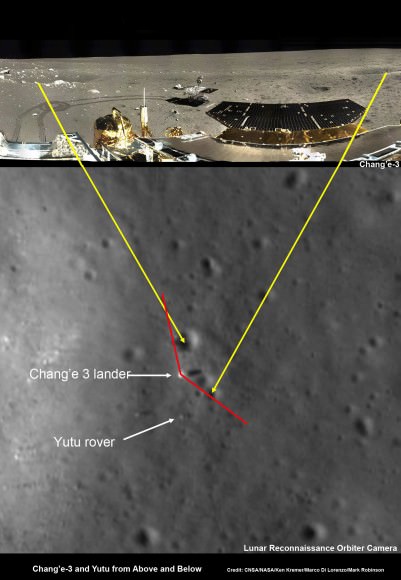
During each 14 Earth-day long night, the Moon’s temperatures plunge dramatically to below minus 180 Celsius, or minus 292 degrees Fahrenheit.
A radioisotopic heater unit keeps the Mast instruments warm, during lunar night, in the absence of solar power.
Dust accumulation on the rover and gears may possibly be to blame for the failure to retract, based on unofficial accounts.
China has not released any official or detailed information on the cause of the malfunction or recovery actions taken by Chinese space engineers.
So, no one knows the ‘Jade Rabbits’ fate at this time.
‘Jade Rabbit’ has been immensely popular with the Chinese public.
Over 36,000 well wishes were posted on an unofficial Sina Weibo account shortly after word of the mechanical anomaly was announced.
Lunar Day 3 at Mare Imbrium was due to start around this past weekend Feb. 8 or 9.
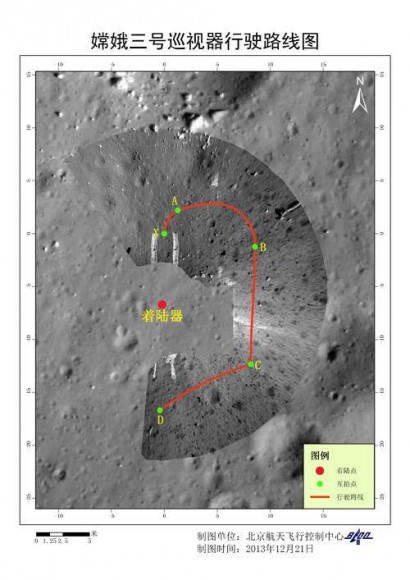
An anonymous writer on Weibo, China’s twitter equivalent, reported; “We will hopefully get back news of the rabbit after sunrise today February 10 at 15:00 hrs (3 pm), Beijing local time, and confirm whether safe or unable to move.” That is according to a google translation I used.
Both vehicles depend on their life giving solar panels to produce power in order to function and accomplish their scientific tasks during each Lunar day which lasts approximately 14 days.
They had been functioning perfectly and collecting science measurement as planned during Lunar Day 2.
‘Jade Rabbit’ had departed the landing site forever, and was journeying southwards as the incident occurred – about six weeks into its planned 3 month long moon roving expedition.
In a historic feat for China, the Chang’e-3 spacecraft safely touched down on the Moon at Mare Imbrium near the Bay of Rainbows some two months ago on Dec. 14, 2013 .
Seven hours later, the piggybacked 140 kg Yutu robot drove off a pair of ramps, onto the Moon and into the history books.
The 1200 kg stationary lander is expected to return science data about the Moon and telescopic observations of the Earth and celestial objects for at least one year.
Chang’e-3 and Yutu landed on a thick deposit of volcanic material.
The hugely popular probes could be the forerunners to a manned Chinese Moon landing mission a decade from now.
China is only the 3rd country in the world to successfully soft land a spacecraft on Earth’s nearest neighbor after the United States and the Soviet Union.
Stay tuned here for Ken’s continuing Chang’e-3, Orion, Orbital Sciences, SpaceX, commercial space, LADEE, Mars and more planetary and human spaceflight news.
